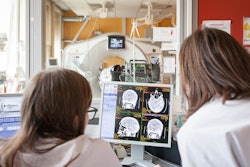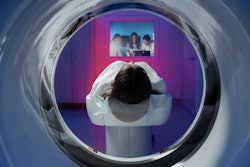A new structured dictation style that uses voice commands may help to improve the accuracy of radiologists in reporting their findings. That's the conclusion of research published in the European Journal of Radiology.
A team led by Mona Roshan from Florida International University in Miami found via eye-tracking validation that the dictation style, which maps positive findings only to radiology reports, significantly decreased dictation time and improved accuracy.
“With improvements in the AI algorithm, this clinically relevant, concise, and accurate reporting style will be useful for radiologists and the field of medicine,” Roshan and colleagues noted in an article posted on 4 October.
While structured reporting has its benefits in better organization and understanding of imaging findings by providers and patients, radiologists have been hesitant to universally adopt it. A study published in 2015 found that just over half of radiologists used structured radiology reports regularly, while one in three “occasionally” used the style.
Voice recognition technologies such as conversational AI, which understands speech and converts it into accurate text on a document, are available for use. However, this has added more burden to radiologists as they are now self-editors in reporting, the researchers wrote. This has led to increases in turnaround time and errors in reporting, they added.
Roshan and colleagues wanted to validate a new radiology reporting style that complements conversational AI by using eye-tracking technology. This style focuses on positive findings-only dictation that uses voice commands. The goal of the new style is to maximize radiologist interpretation time, increase accuracy, and minimize dictation time.
Specialized eyeglasses were used to obtain quantitative data on dictation time, interpretation time, and total examination time. From there, thermal heat maps were generated from the recordings taken from the eyeglasses. These maps provided representations of where radiologists viewed the most to least during case reviews.
For the study, the researchers monitored two board-certified radiologists as they reviewed cases featuring images from various modalities. These included chest x-ray, PET/CT, cardiac MRI, and chest CT, among others. The positive findings-only dictation style used voice commands through a podcast-style standalone microphone in 76 cases, while a standard check-list dictation style used a handheld microphone in 81 cases. The radiologists used each style for various imaging modalities.
The researchers found that the new dictation style led to significant changes in the visual attention of the radiologists. This included reduced heat map overlaying for the reporting software compared to the standard checklist style. The researchers wrote that this indicated greater focus on medical images.
The team also reported that cases with at least one voice recognition correction significantly decreased using the positive findings dictation style (5.26%) versus the standard check-list style (14.81%; p = 0.0240).
The group also found that the new dictation style significantly decreased average dictation time to 16.54 seconds compared with 29.39 seconds for the standard style (p = 0.0003). It did so without significantly impacting interpretation time or total examination time. This included an interpretation time of 70.9 seconds and a total examination time of 87.45 seconds compared with 64.3 seconds (p = 0.78) and 93.69 seconds for the standard style (p = 0.38), respectively.
The study authors highlighted that their findings confirm that implementing a positive findings-only dictation style using a standard structured reporting template and a standalone microphone can improve the performance of radiologists.
“Without standardization, there is incompleteness, variability, mistakes, and ample time wasted in forming the report,” they wrote. “The positive findings dictation style offers a novel and innovative way to overcome these challenges.”
The full report can be found here.




















